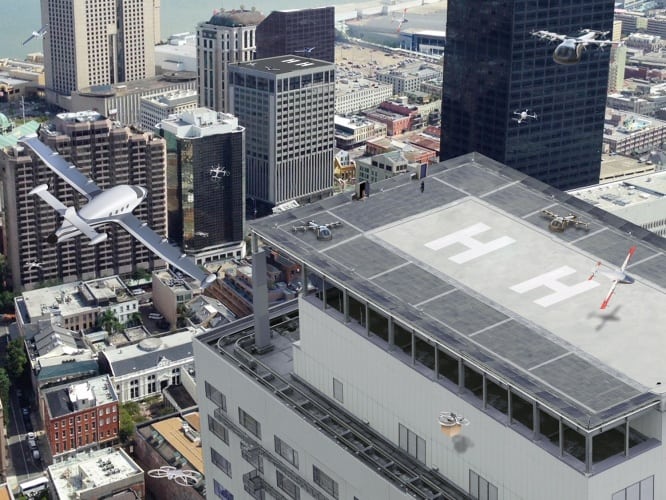NASA and Uber team up for urban airspace modelling project
The US space agency NASA and ride-hailing platform Uber have signed an agreement to explore the technologies and challenges related to urban air mobility (UAM).

(Credit: NASA)
As part of the project, Uber will share details of its plans for an urban aviation ridesharing service. Announced in April 2017, the Uber Levitate Network plans to have passenger-carrying VTOL (vertical take-off and landing) in the skies by the end of the decade. However, the safety, certification and logistical challenges of such a network are considerable.
https://www.theengineer.co.uk/uber-plans-on-demand-flying-taxi-service-by-end-of-decade/
NASA will take the information provided by Uber to create airspace management simulations and models, assessing how urban VTOL passenger craft and fleets of delivery drones might interact in crowded urban airspace. According to the space agency, this is its first agreement specifically focused on UAM modelling.
“NASA is excited to be partnering with Uber and others in the community to identify the key challenges facing the UAM market, and explore necessary research, development and testing requirements to address those challenges,” said Jaiwon Shin, associate administrator for NASA’s Aeronautics Research Mission Directorate.
Register now to continue reading
Thanks for visiting The Engineer. You’ve now reached your monthly limit of news stories. Register for free to unlock unlimited access to all of our news coverage, as well as premium content including opinion, in-depth features and special reports.
Benefits of registering
-
In-depth insights and coverage of key emerging trends
-
Unrestricted access to special reports throughout the year
-
Daily technology news delivered straight to your inbox










Water Sector Talent Exodus Could Cripple The Sector
Maybe if things are essential for the running of a country and we want to pay a fair price we should be running these utilities on a not for profit...